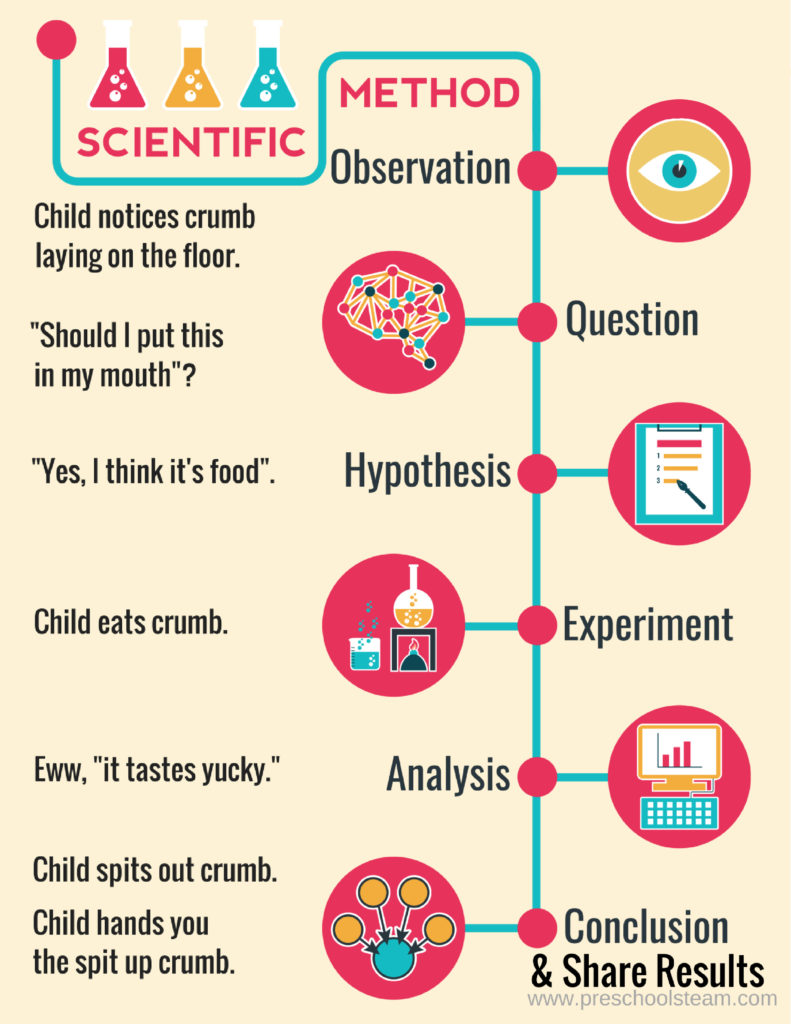Foster your child’s curiosity and early math skills with STEAM activities
What is STEAM?
STEAM stands for science, technology, engineering, art and math. It’s an interdisciplinary teaching strategy that provides the opportunity to learn about science and math subjects in ways that foster creativity, imagination and a passion for learning.
What’s the difference between STEAM and STEM?
STEM stands for science, technology, engineering and math. STEAM adds art, emphasizing the importance of using design, speech, planning and inventiveness. Art in STEAM is about encouraging an interdisciplinary, cross-curriculum learning approach.
How could a baby or toddler learn about STEAM?
Your little one might not be ready to make a baking soda volcano or learn to code, but young children can learn early STEAM fundamentals through playtime and everyday activities. Activities involving STEAM help young children foster early math skills, curiosity and creativity. They’ll also help nurture an interest in topics like space, animals, earth sciences, architecture and more!

Here are some STEAM activities your child will love:
- Playing with materials like sand, water, Play-Doh and dirt. Manipulating and pouring these substances helps young children learn early science and math concepts, such as the properties of dry and wet, weight and volume.
- Practice counting and using numbers. Early math skills aren’t built with flash cards and worksheets. Everyday activities and play like counting building blocks, sorting shapes and making patterns help children create a foundation for future math learning. Check out these games and activities from ZERO TO THREE.
- Explore nature. Head to your local park and talk with your child about the changing leaves, bugs and animals you see and how trees grow. Even if you don’t have answers for why leaves are green or how birds fly, your child’s curiosity can be sparked by observing nature!
- Building blocks. When your child stacks LEGOS, cubes, books or even crackers, they’re learning basic concepts of physics like gravity, balance and weight.
- Drawing. Using crayons or markers to draw or color is one of the first ways children practice design and express their creativity. And when they start drawing circles, squares and other shapes, they’re actually starting to understand and practice basic geometry. Just encourage them to practice on paper, not the walls, dog or their younger sibling.
- Head to local museums. Whether it’s a children’s museum, science center, natural history museum, art museum, zoo or something unique to your area, take advantage of local resources to provide your child with a unique learning experience.
- Read! There are lots of books that introduce STEAM topics in a way that children will engage with. Children’s books can help them practice STEAM skills like counting, shapes and names of things in nature and intrigue them with stories about space travel, robots and discovery.
All content in this article, including any advice or commentary from Southwest Human Development staff and/or others, should be considered an opinion and is provided for informational purposes only. The content is not intended to be a substitute for medical or other professional advice, diagnosis or treatment. Always seek the direct advice of your own trusted professional with any questions or concerns you may have regarding the child/ren in your care. Southwest Human Development does not recommend or endorse any specific tests, products, procedures or other information that may be mentioned in this article. You may contact Southwest Human Development’s Birth to Five Helpline at 1-877-705-KIDS (5437) to speak with one of our early childhood professionals for personalized assistance. Birth to Five Helpline specialists are available Monday through Friday from 8 a.m. to 8 p.m.
